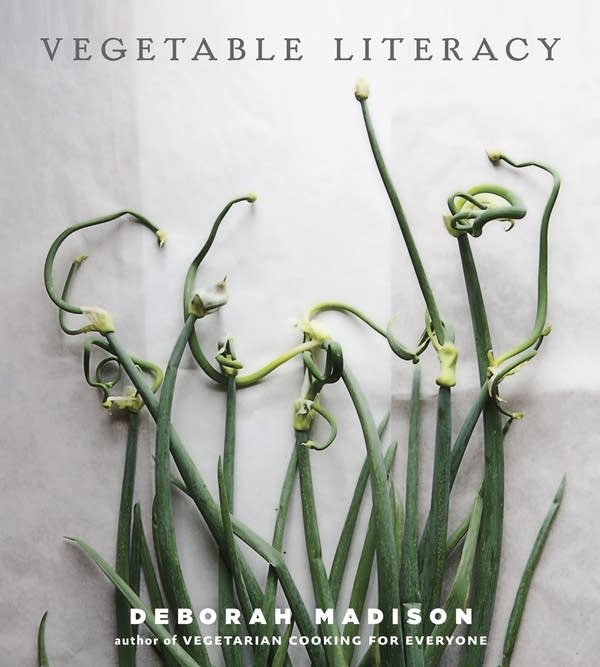
One vegetable in particular never gets used up in the refrigerator: the radish. Deborah Madison, author of Vegetable Literacy, shares some new ideas for the often overlooked vegetable.
Lynne Rossetto Kasper: You’ve probably written at least a million words about vegetables and seasonal cooking, but this book is different. This book is written by somebody who has begun gardening.
 Vegetable Literacy
Vegetable Literacy
Deborah Madison: I think once you get into the garden and that becomes part of your source of food, you realize the difference between eating food that’s really alive and that’s kind of sort of alive -- that’s been sitting around the store. I think of it as languishing compared to just picking things and bringing them in.
But there's also a quality of, “I grew it, it’s my baby, I love it no matter what.” And you just eat the ugliest stuff and you’re so happy. I am not a perfectionist gardener by any means; I’m a beginning gardener, and not everything comes out as it should. I always feel like, “Oh my gosh, it grew under my watch,” so there's sort of a feeling more of gratitude.
LRK: You’ve divided the book into vegetable families, but there's one particular vegetable I want to talk about because it never gets used up in the refrigerator: the radish. Most people look at a radish and think, I’m going to slice it and put it in a salad, and that’s it.
DM: What I like to do with raw radishes is, first of all, find a couple of different varieties. I especially love the ones that have the rose center and the pale green center -- the red meat radishes, the watermelon, all of that. Mix them maybe with a turnip that has a really scarlet skin, maybe also adding in there a carrot -- a purple-skinned carrot. I slice all of these paper-thin, and they get so translucent, delicate and delicate-tasting. Then I mix them all with some things like radish sprouts, maybe some of the radish leaves, a little salt and pepper, lemon juice and olive oil. I put in some very thin slices of a dry Monterey Jack cheese, an aged Gouda or maybe manchego, which isn't the usual thing to do with radishes. But I think that the proteins and caseins in the cheese give it such a round, wonderful taste. It’s one of my favorite salads, and it’s absolutely beautiful.
LRK: It sounds gorgeous. What's your advice on eating radish leaves?
 Spring Garden Hodgepodge
Spring Garden Hodgepodge
DM: I looked at radish leaves and thought, “You know, that’s interesting. They sort of look like arugula leaves, except they're spiny and rough. But they're in the same family -- chances are they taste sort of similar.”
Radishes do produce lots of lovely dark-green leaves; go through them, throw out the ones that aren't dark green anymore -- that have turned yellow -- give them a rinse and you can braise them along with the roots. I love using the greens to make a radish soup, for example, with a mild base of potatoes, because they can get very strong, especially daikon radishes. Radish greens, if they're small, there's no reason you can’t put them in a salad, sliver them and toss them with your slivered radishes, or add them to a coleslaw.
LRK: How do you like to cook your radishes?
DM: I like to braise them if I’m going to cook them, just gently. I love to watch their colors fade; they go from being these bright kind of garish colors to these soft, muted spring colors. I think they work so beautifully with other things that may be doing well in your garden at the same time. You might have some peas, a little bit of asparagus, scallions, fava beans -- I just cook them very gently all together. I might make a little stock with leek trimmings, the pea pods, the asparagus -- the peelings; they just amplify that beautiful green flavor that’s there in the mature vegetables.
Before you go...
Each week, The Splendid Table brings you stories that expand your world view, inspire you to try something new, and show how food connects us all. We rely on your generous support. For as little as $5 a month, you can have a lasting impact on The Splendid Table. And, when you donate, you’ll join a community of like-minded individuals who love good food, good conversation, and kitchen companionship. Show your love for The Splendid Table with a gift today.
Thank you for your support.
Donate today for as little as $5.00 a month. Your gift only takes a few minutes and has a lasting impact on The Splendid Table and you'll be welcomed into The Splendid Table Co-op.




